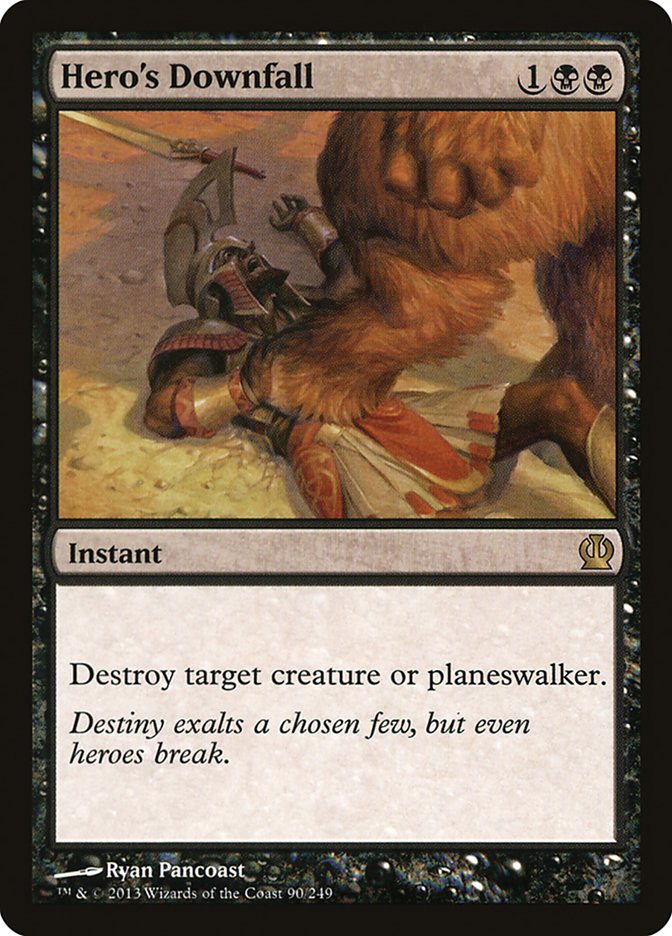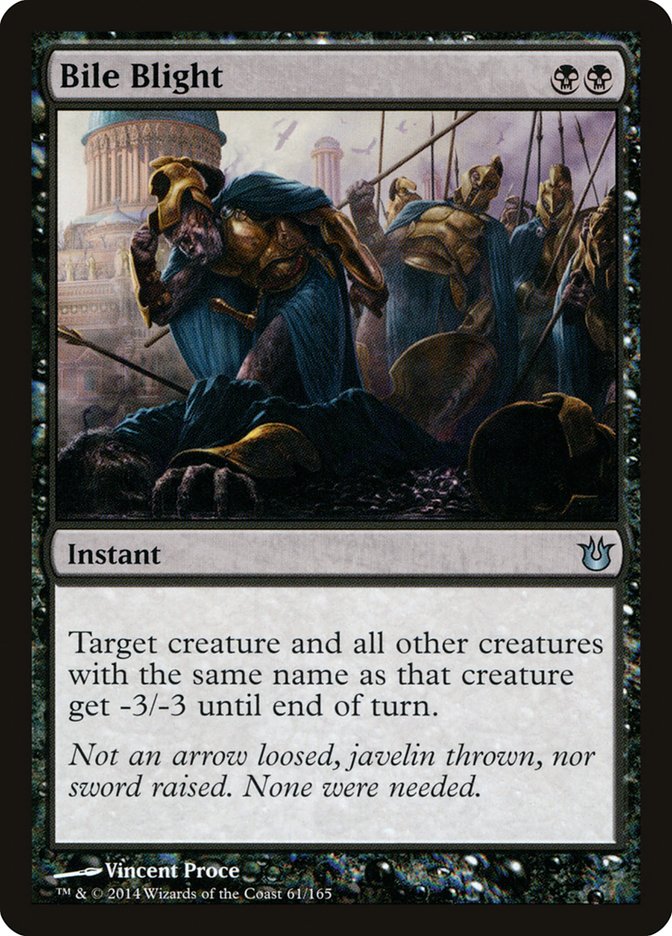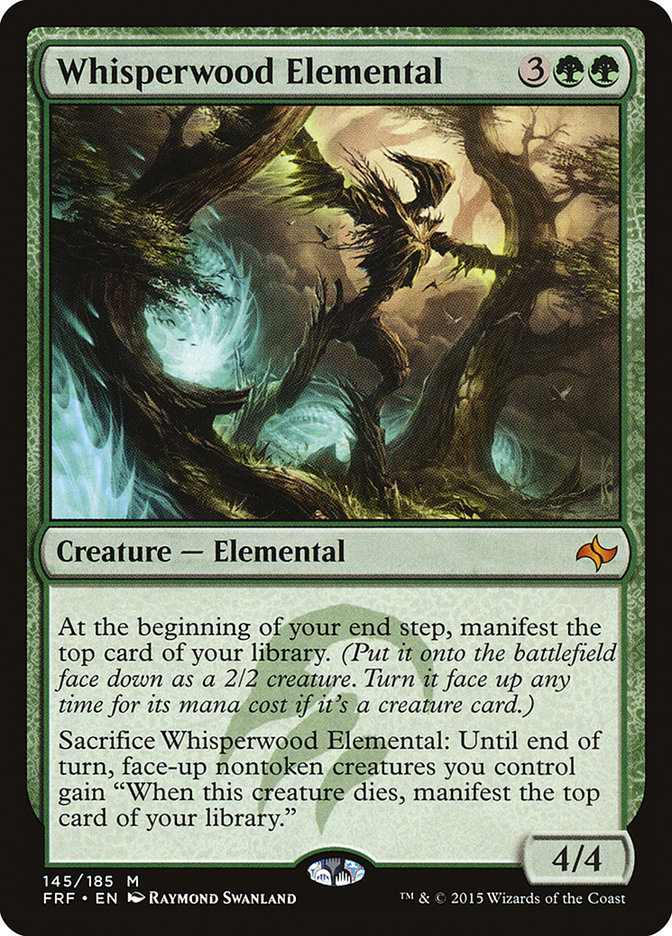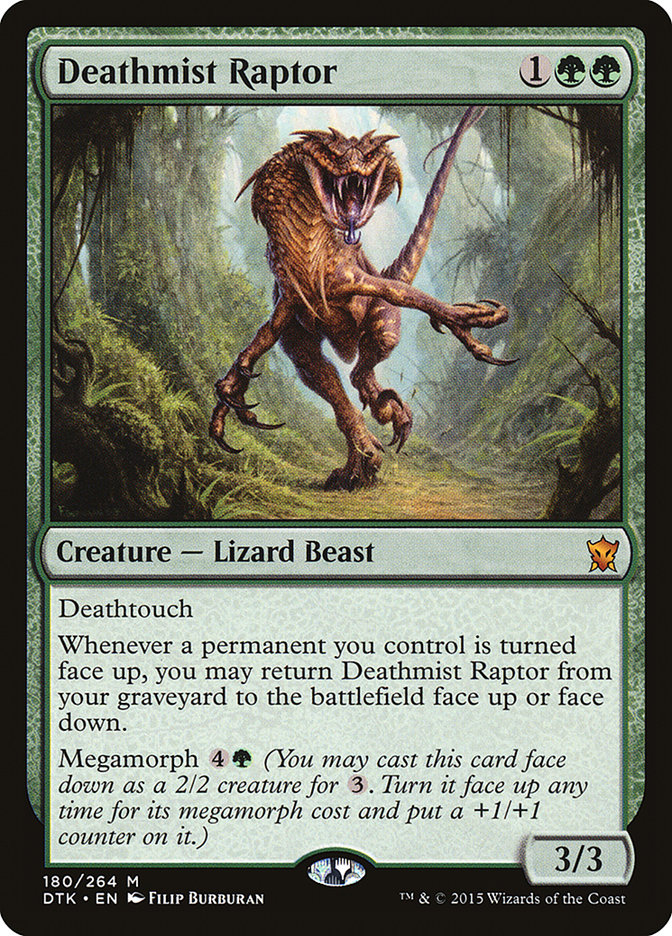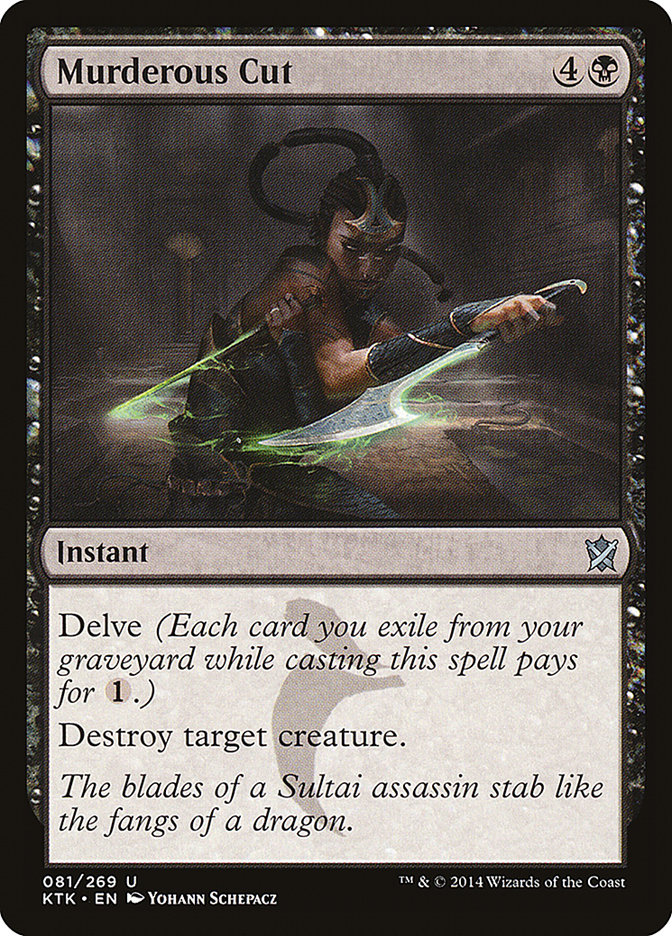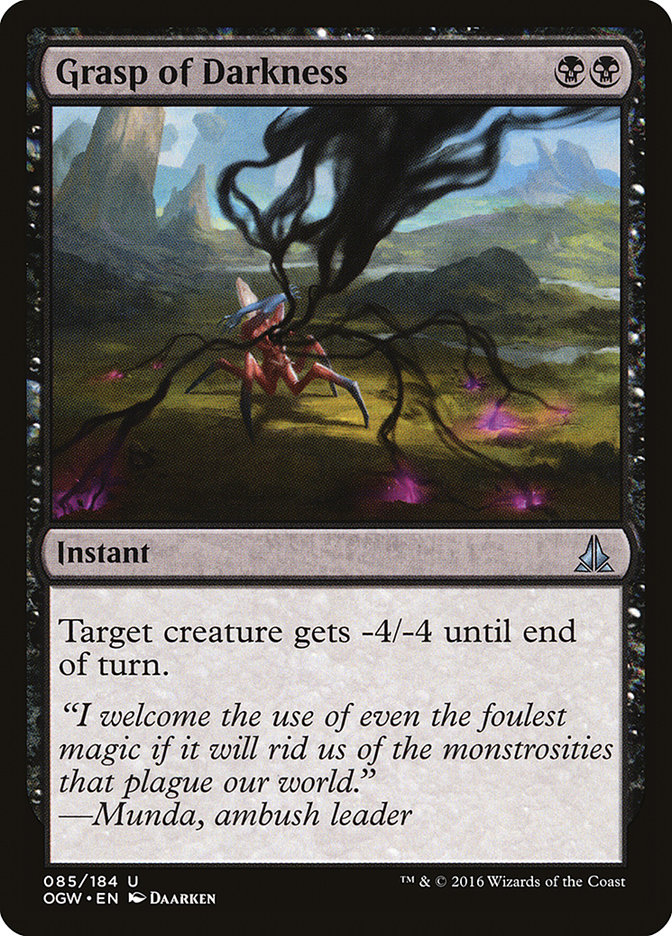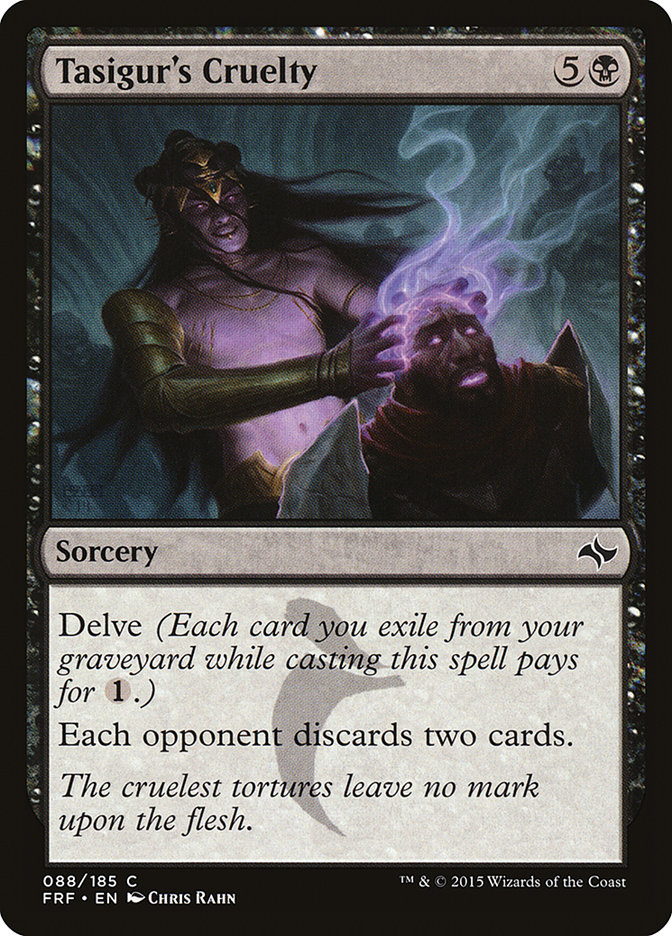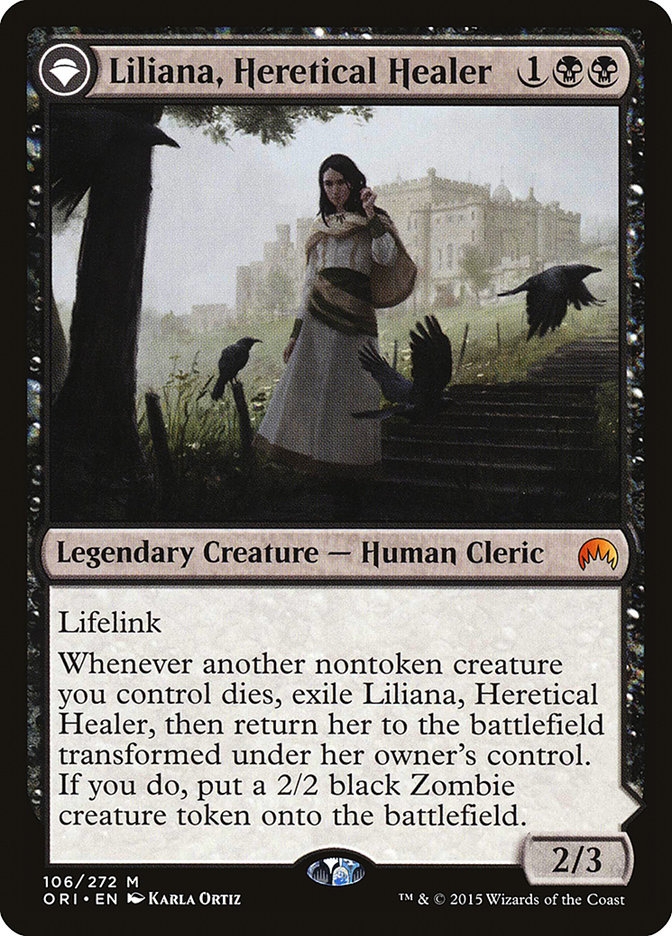 Standard Classic here several years ago, we hadn’t had a large-scale SCG-run event in my hometown in a long while. I had to work this past weekend and was unable to attend, but I followed the coverage closely, as several of my pals were squaring off against the best names in Magic.
Standard Classic here several years ago, we hadn’t had a large-scale SCG-run event in my hometown in a long while. I had to work this past weekend and was unable to attend, but I followed the coverage closely, as several of my pals were squaring off against the best names in Magic.
Whether you were in Broadbent Arena or watching from a distance, though, the Eldrazi dominated again. Sure, an Affinity list took the gold, but there were a lot of the eldritch behemoths running around, proving once again that Eldrazi Temple and Eye of Ugin can make for a brutally consistent engine for Modern players.
But I’m not here to praise or berate the new Modern paradigm. In fact, I don’t really have a dog in that fight anymore, as I’ve gotten more or less out of Modern as a competitive space. It’s not that it’s difficult to brew in; it’s just difficult to play in.
No matter how fun a brew you make, it’s tough to test against the likes of the more competitive decks people at the local shops have. The power gap between my brews and a competitive archetype are much farther in Modern, enough so that even a well-executed Modern plan on a budget is no match at all, and we both leave the match unsatisfied, as they fought relatively unopposed and I didn’t get to do anything fun. No, that ship has sailed for me.
The Modern Eldrazi machine keeps pulling both solid staples and more reserved role-players. More and more Oath of the Gatewatch rares are getting Eternal-format attention. But don’t you worry; the Eldrazi in Oath of the Gatewatch haven’t been exhausted yet. One remains that has no place in Modern, but instead deserves a shot in Standard for its efficient stats and unique trigger. Let’s turn this frown upside down!
An imposing 6/6 flying beast that comes with a drawback is nothing new; Standard’s seen its ilk before in Return to Ravnica with Desecration Demon. Originally lambasted as a bulk rare with a condition far too easy to meet, Desecration Demon rocketed to a format staple soon after people realized that, without creatures to disable the Demon, this huge monster could hack huge chunks of life away from your opponent all by itself.
Hero’s Downfall, Bile Blight, and Thoughtseize worked alongside Desecration Demon to create an oppressive archetype that pushed against the format for months before rotating out into irrelevance. Inverter of Truth shares those stats, but not the pesky need to keep your opponents off creatures. You can swing with this thing to kingdom come, if you want.
Its trigger can be a blessing or a curse. Craft your graveyard correctly and you slash all the dross from your deck with a single trigger, but if the Eldrazi is removed by Murderous Cut, blinked by Eldrazi Displacer, or simply matched by cards like World Breaker, we lose all the potential and, with time, will face death by drawing from an empty library
In brewing terms, that presents a delicious challenge which will take two forms. The first is to use the Inverter’s stats in combat without having to pay the price of its trigger. The second will look at ways to use its library creation as a tool to forge a focused path.
For the first deck, we turn to one of current Standard’s oldest mechanics: manifest.
At the time, manifest was a unique mechanic designed to make every card in your deck a creature, even lands and instants. Cards like Mastery of the Unseen and Whisperwood Elemental defined the format with their steady, unstoppable generation of 2/2 threats with upside. As we get ready to say goodbye to Fate Reforged, though, we will use this value-generating mechanic as an illicit way to avoid paying the Inverter’s terrible toll. By forcing a manifest plan, complete with ways to manipulate the top of our library, we’ll be able to put our best cards where they need to go.
Creatures (25)
- 4 Elvish Visionary
- 4 Rattleclaw Mystic
- 1 Hooded Hydra
- 4 Whisperwood Elemental
- 2 Sultai Emissary
- 2 Den Protector
- 4 Deathmist Raptor
- 2 Liliana, Heretical Healer
- 2 Inverter of Truth
Lands (26)
Spells (9)

The creature base makes up the core of this deck, and the spells are almost all directly in service of the Golgari-hued creatures. Elvish Visionary, a card I’ve been happier and happier with in testing for multiple decks, fills the gap for decks that don’t have a highly relevant turn 2 play like Soulfire Grand Master, Hangarback Walker, or Jace, Vryn’s Prodigy. Rattleclaw Mystic, whose color production is mostly irrelevant, has a nice “face-up” trigger, fulfilling the generic cost of any spell I might want to cast that turn.
That and the large manabase will help me reach the crowning card of this deck: Whisperwood Elemental. For a while, you couldn’t play G/R Devotion without this little Elemental dominating your mid-game. It carries immense fire-and-forget value, and the ability to conjure an army of likely-to-flip targets in this particular list is thrilling. Moreover, getting value out of dying Elvish Visionaries is a big plus from me.
Similarly, Den Protector and Deathmist Raptor prevailed over Standard for several months, indomitable in their efficiency and resiliency. While this time has ebbed a bit, you’re still looking at two powerful creatures, and if you’re moving in on the morph/manifest plan even a little bit, these two should be banging at your door.
Finally, I included a couple copies of Inverter of Truth and Sultai Emissary. The Emissary is pretty slow, but it’s a strictly better Butcher Ghoul, and that creature saw a pinch of play as a fiddly common. The ability to turn your two-mana 1/1 into your deck’s best card is thrilling.
Liliana, Heretical Healer has gotten lots of attention thanks to Rally the Ancestors decks, but she’s a great value engine herself. Sacrificing Whisperwood Elemental causes her to flip immediately, and if she’s under a manifest, she can flip at will if some other creature of yours is about to die, providing you an instant Zombie. As a planeswalker, her discard ability lets you toss away Inverter of Truth; remember, in this list, we’re not trying to cast it!
The final creature is a single Hooded Hydra, a Khans of Tarkir bulk mythic that was never given the courtesy of a devotion berth. This poor thing never really got the chance to shine, and by golly, I want it to be decent once!
The spells are mostly based on removal, which most creature-heavy decks rely on to handle its troubles out of combat. Besides that, two Corpse Churns give us opportunities to dig deep and find the right creature for the job. Even with the occasional miss, Murderous Cut is ready to eat up the trash. Reclaim is the bullet, a cute way to make Manifest immediately relevant, choosing anything in your graveyard. This is no Den Protector, but you don’t really want it to be that. One is enough; the look on your opponent’s face doesn’t need a replay.
The deck is very color-intensive, so the green and black producers are deep. Mortuary Mire provides a sorcery-spell Reclaim, which is an interaction I’d never considered in a manifest deck.
The sideboard features another weird one, but it seems to get better as time goes on and cards like Pia and Kiran Nalaar and Kolaghan, the Storm’s Fury continue to rise: Windstorm. This old green sweeper is not right for every deck, but being able to deploy a one-sided sweep at instant speed is very critical to not getting blown away by Thopter-centered or Dragon-centered decks.
The deck ran surprisingly smoothly in testing; Deathmist Raptor continued to impress me with its relentlessness, and Inverter of Truth was very powerful as long as you kept the pressure on. I had to cast it about as often as I turned it up with Whisperwood Elemental, but the downside turned out to not be much of a problem.
It needed more removal in the maindeck, I’d say; Fleshbag Marauder felt pretty strong when sacrificing things like Sultai Emissary, Elvish Visionary, or a Whisperwood Elemental manifest. Although I didn’t fight any token decks, I imagine it might struggle to accomplish its goal.
This deck felt fairly normal, and Inverter of Truth felt a bit too much like a side attraction instead of the main event. In our second list, though, we’ll use the Inverter as an integral part of the plan.
Big creatures have one equally big weakness: removal. In order for a big creature to finish the game, it has to either be resistant to or immune from removal. Inverter of Truth isn’t really that way, but if we can’t protect it one way, we’ll find another.
Decks these days generally feature some amount of dedicated removal, something that they hold until they find the most problematic creature to kill, or else the most tempo-friendly one if the interest is conserving mana.
If they don’t have the removal, though, there won’t be much that can tangle with Inverter of Truth in combat. If we pluck the opponent’s answers out of their hand, they will have little chance of dealing with the Inverter and, with just a couple turns to topdeck the answer, they will lose to its impressive stats. With 60 cards, we’re diluting our best cards to do this, but Inverter can help keep our draws tight if we play our cards well.
Although it’s tempting to get into blue or white for protective instants, I think our best bet might be to keep to the core of the concept.
Creatures (17)
- 4 Bloodsoaked Champion
- 4 Liliana, Heretical Healer
- 1 Despoiler of Souls
- 2 Hangarback Walker
- 4 Endless One
- 2 Inverter of Truth
Lands (23)
- 20 Swamp
- 3 Mortuary Mire
Spells (20)

This list is a bit straightforward, and cards like Liliana, Heretical Healer and Inverter of Truth both play a bigger part. Endless One has come a long way from near-bulk to a Modern frontrunner, but here it provides a variety of functions. You often do want to cast it wherever you’ve got room on the curve; no need to wait for best value. If you play it early, it dies, and you Invert, by the time you draw it, you’ll be able to cast it again as a larger creature.
Hangarback Walker is similar on that front, but I’ve found its lack of power/toughness efficiency disturbing lately. Bloodsoaked Champion is one that’s fine to die, either in single combat or with a Liliana, Heretical Healer on the battlefield. As I’ve done in the past, Liliana, Heretical Healer flips with a Hangarback Walker or Endless One for zero, and even a second copy of herself flips her. As a singleton, Despoiler of Souls seemed like a great way to eat away less relevant creatures before Inverter flips your deck.
The spells are more diverse than those in the previous list, letting us build a graveyard to Invert that we can be proud of. Once they’re out of cards for us to Duress and Despise, we can Murderous Cut or Tasigur’s Cruelty the spells away so the Inverter turns over a good deck. Grasp of Darkness is cruelly efficient, and it’s relevant before Inversion as a good removal spell and after Inversion as a good combat trick to help deal with some of the bigger creatures your opponent has resolved.
The land is simple and purposefully excludes fetchlands despite six delve spells. After Inversion, fetchlands can be worse than basic lands if you’ve been unfortunate enough to not bin a single Swamp. We’re not splashing a color, so they’re almost always worse than a basic Swamp. Mortuary Mire reprises its appearance here, but with a different role. You can also replace a binned creature to be drawn the next turn or, if you’re ready to Invert, you can tuck away an extra discarded copy of Liliana into your soon-to-be exiled library before sending it on its way.
One note on the sideboard: while cards like Self-Inflicted Wound are nice removal spells with a bit of upside, they can be exceptionally powerful in multiples and following Inversion. The life loss really starts to matter. Similarly, a recurred Infinite Obliteration slowly, but surely destroys your opponent’s deck, removing critical win conditions one by one.
This one was, surprisingly, less consistent than the first deck, but it was also way more fun. The deck felt like it had a stronger game against fast decks, and if it hit its stride, it felt unbeatable. Preparing for the Inversion was still tricky and required careful lines of play, many of which are not intuitive, but that’s kind of what I like. I was able to get a 6/6 flyer online several times where they held a land. Even if they dealt with it a turn or two later, I had enough else on the battlefield to finish the job.
Liliana was excellent, though four might have been pushing it. Tasigur’s Cruelty was a bit underpowered, but sometimes it was exactly the ticket I needed to dig deep through my graveyard to prepare for Inversion. I won about half the games I played, but almost always with the intended game plan. That might be as much a testament to cards like Grasp of Darkness and Liliana than to Inverter of Truth, but I’ll happily be at the helm of either.
Inverter of Truth might get a considerable amount more to work with as Shadows Over Innistrad becomes more visible, but until then, these are both fun ways to utilize one of Oath of the Gatewatch’s more bizarre cards.
Have you Inverted your library in an interesting way with this Eldrazi? How deep have you gone to craft the perfect stack?


